

Discover more from Easy By Nature
The crystalline scream of a Great-horned Owl pierced the silence. I followed it to the source and found two fully grown young owls perched in a Black Walnut tree. Their screams could be them begging for food, indicating stress or danger, or sharing their location.
When I first saw them, I noticed one holding a long white string that resembled a rabbit intestine against a branch. The other was pulling on the string with its bill.
They eventually perched next to each other in a more open location, held each other's feet, and appeared to play tug of war. They were forcefully pulling at each other. At first, I thought they were fighting over food, but when I looked at the images, I realized neither of them had any food. Maybe I had witnessed the owl version of “Stop touching me! No, you stop touching me!”
I conjured up a story about sibling rivalry and how this must be the young trying to exert their dominance over each other. The opposite could be true as well; nest cams have documented siblings sharing food with each other.
They were both flapping to maintain their balance on the branch as they pushed and pulled. The owl closest to me started to lean forward, dove off the branch, and perched nearby. The other owl leaned forward and stared with what appeared to be great longing. These young owls could be feeling a surge of hormones and the need to separate from their family. They could also just be annoyed with each other. I paused and realized that I was witnessing behavior beyond my understanding. Maybe they were just playing or playing and fighting. There was no way to fully comprehend what I was observing.
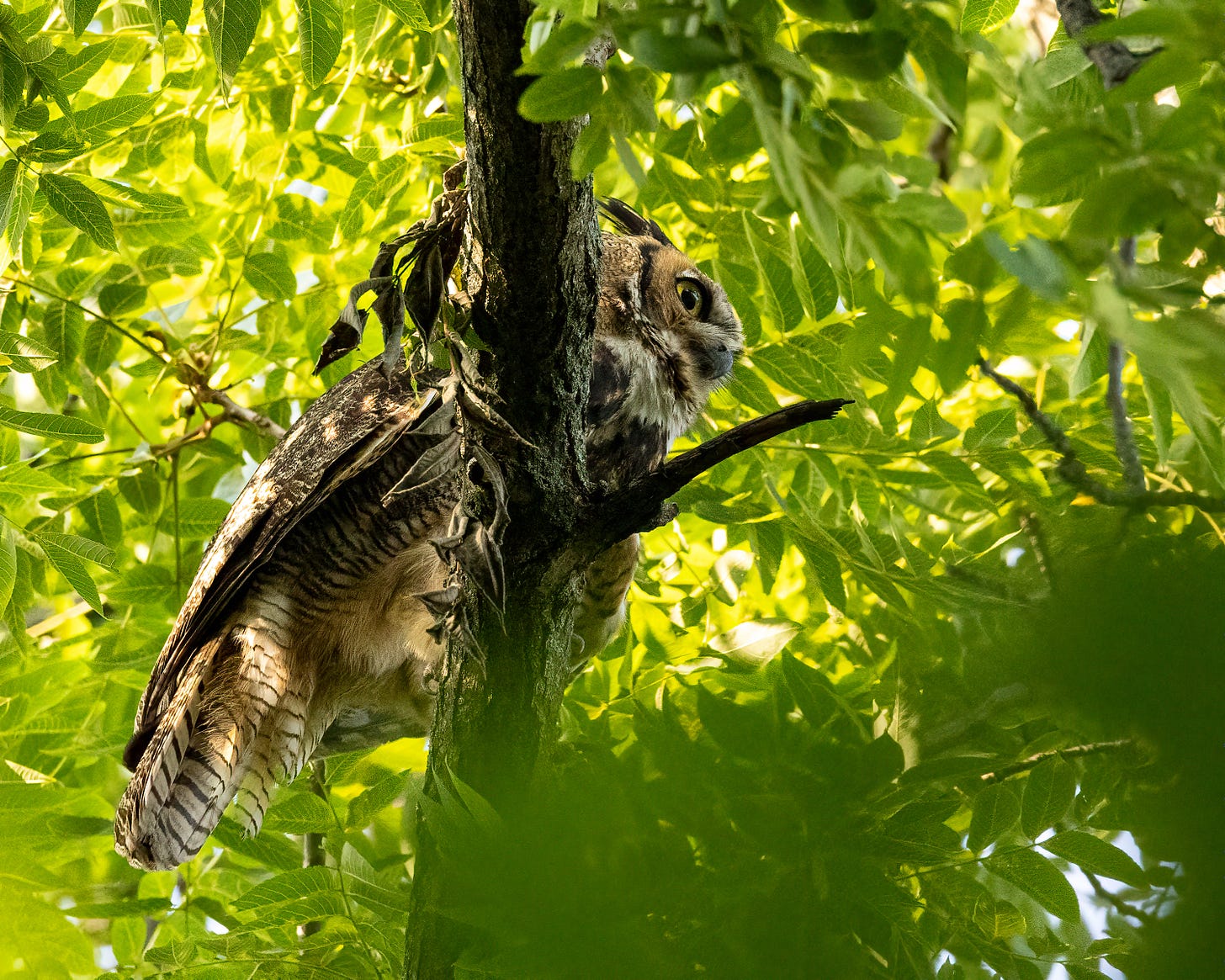
This experience highlights our complex relationship with owls. Throughout history, they have fulfilled mythic roles in cultures around the world. We have seen them as embodying good and evil. Owls’ otherworldly caterwauling in the darkness is deeply lodged in the human psyche. This has led many cultures to consider owls a bad omen. We all have a visceral fear of darkness and the creatures that live in that foreign realm. This cosmic fear can be leveraged to energize us and help us awaken to the fact that we are connected to all life, even life in the dark.
In other cultures, owls are seen as part bird and part spirit. On the margin between the real and the ethereal, owls are considered envoys from the spirit world. These envoys are portrayed as being both wise and unintelligent.
The notion that owls are dumb has never sat well with me. Fortunately, Jennifer Ackerman's latest book, What an Owl Knows, tells the stories of researchers and other owl lovers who are using modern technology to shed new light on owl behavior. She shows many instances of how hubris has limited our understanding and appreciation of owls. It turns out that owls are not dumb; we are just impatient creatures of the light.
She features many stories of compassionate women who connect with owls and make important discoveries that reveal the limitations of a strictly mechanistic worldview. Science is amazing, but it has its limits and is just one way of knowing. You can learn a lot by being open and curious and letting your direct experience inform your perspective. This produces inconvenient information and insights, which is part of the reason why these ideas are often dismissed and neglected.
Take owl calls, for example. The prevailing notion is that one owl's hoot is like another's. That is until researchers teamed up with a Baroque musician to prove otherwise. Marjon Saveslberg was trained as a classical musician, and she could discern very fine distinctions in the pitch, tempo, rhythm, and quality of owl calls. When combined with modern artificial intelligence algorithms to sort through large data sets, she was able to figure out that each owl had a signature call. The owls hear variations in the calls that we cannot detect. We hear hoots while the owls are having a nuanced conversation and sorting out who is nearby and what they are up to.
Gail Buhl with the Raptor Center at the University of Minnesota is another person who has helped illuminate what owls are really like. She has spent 30 years caring for owls. She describes the prevailing view among falconers that owls are slow on the uptake. She realized that the issue is that owls are subtle and hard to read, and most people are not good at interpreting their behavior. You have to be patient and in tune with them to understand them. It does not help that we are often loud, insensitive, and blundering around in bright light.
Owls are denizens of the night. They are silent, stealthy, and can hear very subtle sounds like a mouse walking through leaves. They are often stressed by our presence due to feeling threatened and out of their element.
Owls are also individuals with personalities and emotions. Their emotions influence their behavior. When owls are stressed and have to choose between safety and food, they will choose safety. This makes training with food rewards challenging.
Being stressed is especially acute for small owls, like Screech and Northern Saw-whet owls. Their defense in the wild is to sit still and hide. People who work with owls have interpreted this “sitting still” behavior in small owls as calmness, but in reality, they are terrified. They respond to perceived threats - such as our presence - by freezing and turning their eyes into slits.
The stress response in owls has a lot to do with our behavior. We act like predators. Making direct eye contact, staring, and pointing cameras and binoculars at them are all acts of aggression in the eyes of owls. This causes the already stoic owls to internalize their stress and remain still.
When you are working with owls, your body language matters. If you avert your gaze, turn your body at a 45-degree angle, use your peripheral vision to glance at them, and learn to recognize when they are ready to engage with you, the owl suddenly gets much smarter.
Now that we know this, it is possible to appreciate owls in a different light. A diffuse light where humble people extend kindness to others and, in so doing, change the world in unforeseen ways. Learning to face owls at a 45-degree angle prepares us to face other challenges in a new way. Owls are bewildering, and now is a good time to be a little more bewildered. We are living in tumultuous times that are prompting us to reconsider who we are, what we believe in, and whether or not we are open to experiencing synchronicity with all of life. Taking a position of deference infused with compassion and benevolence as we listen to others, watch their body language, and strive to see things from their perspective would move us closer to the truth.
Unknown source
You can see amazing footage of owls on the owl cams at the Owl Research Institute. Seeing a Great Gray Owl sitting on her nest is beautiful and shocking. When she looks at the camera, you can clearly see that there is someone behind those brilliant yellow eyes.
The book Wesley the Owl tells the story of a young woman who raised and lived with a barn owl for twenty years. The stories that she shares reveal deep insights into the personality and emotional life of owls.

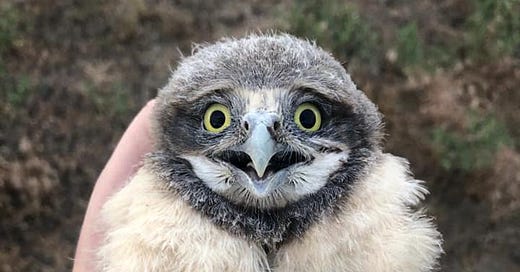



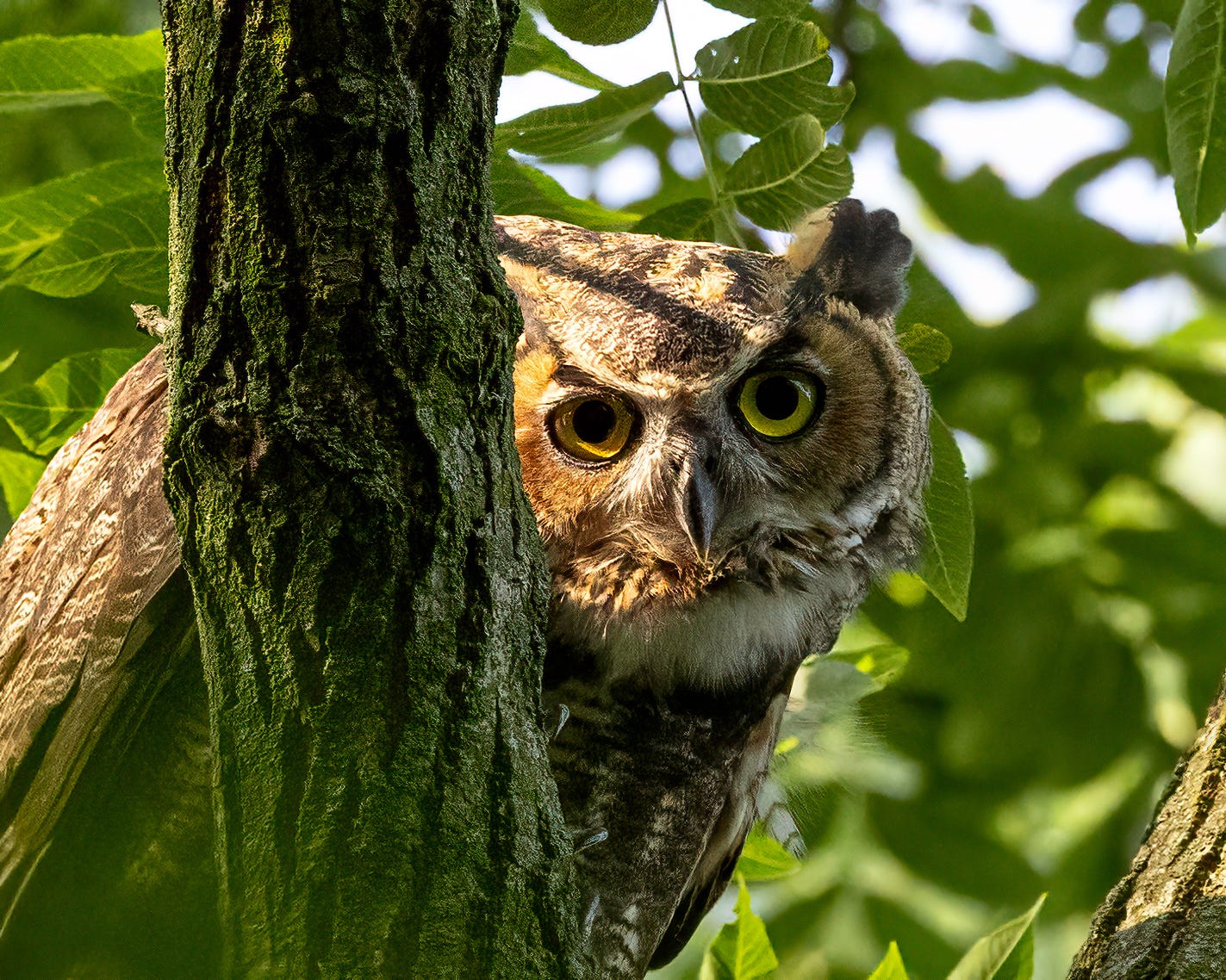
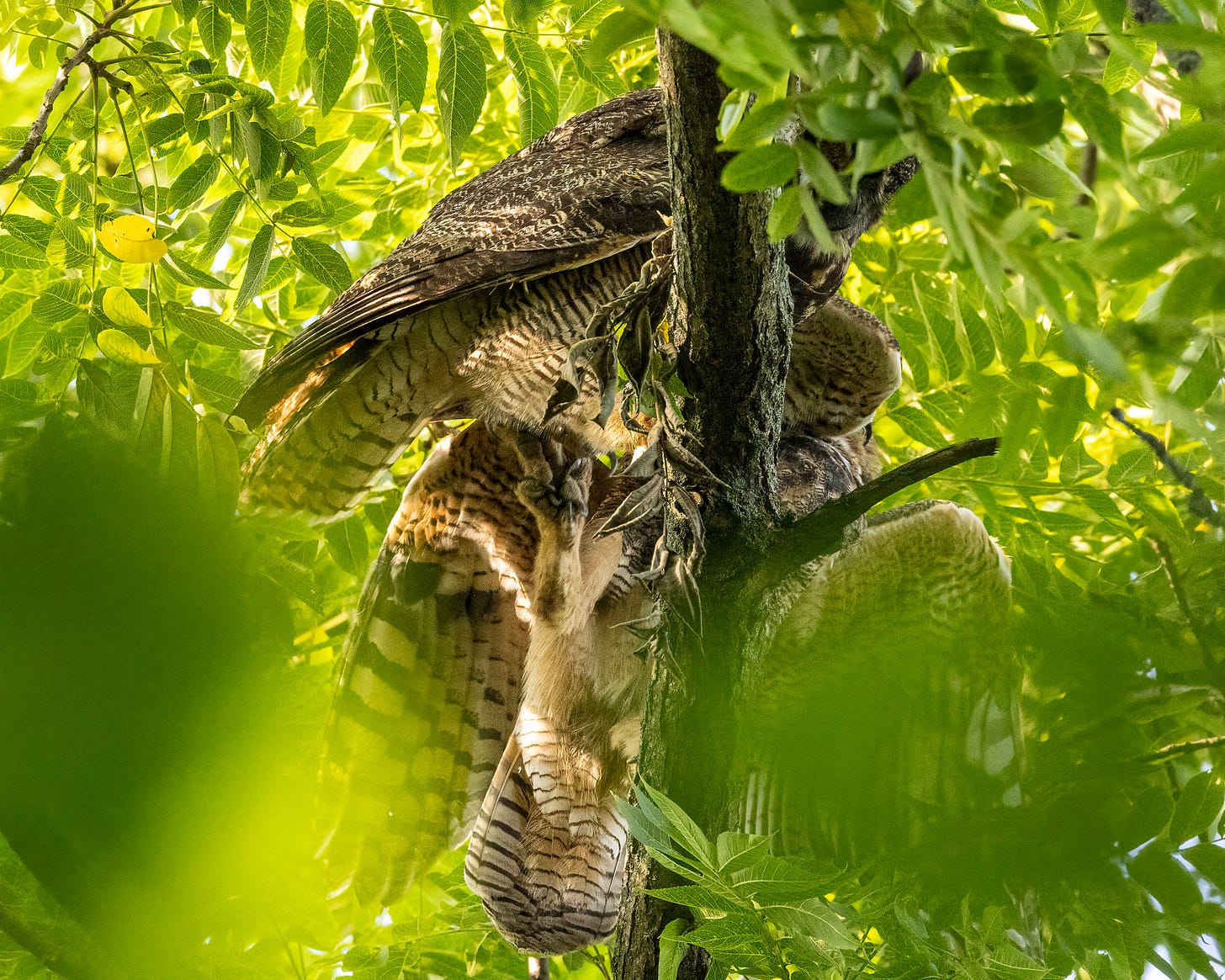
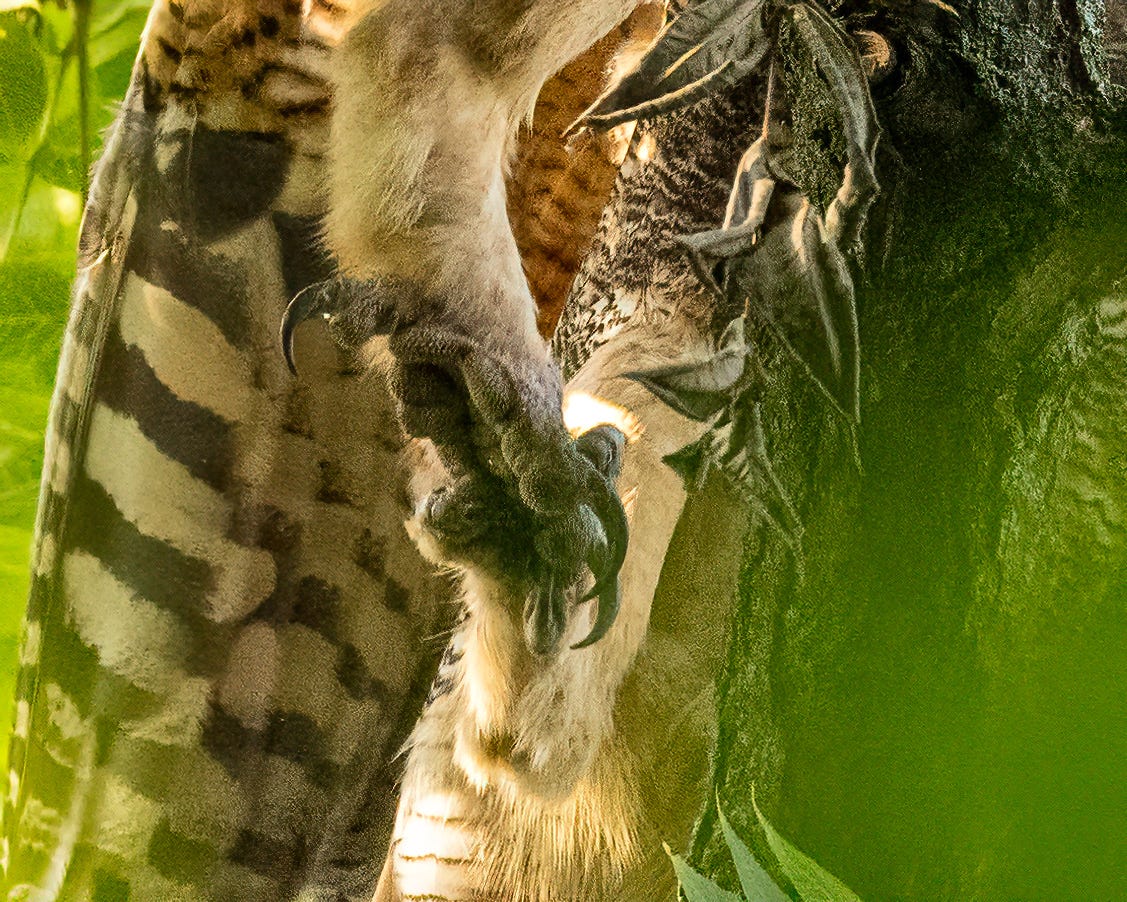
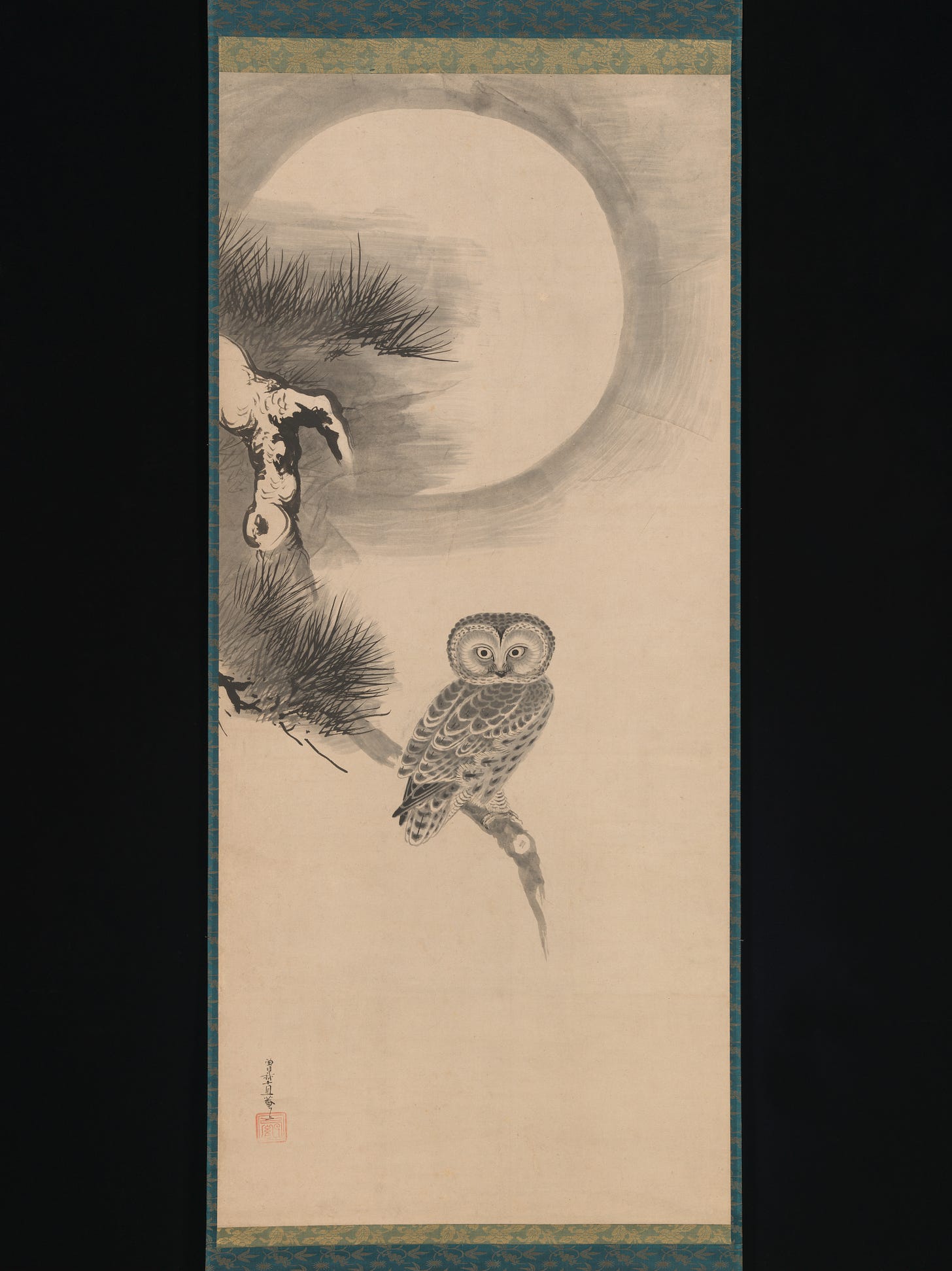
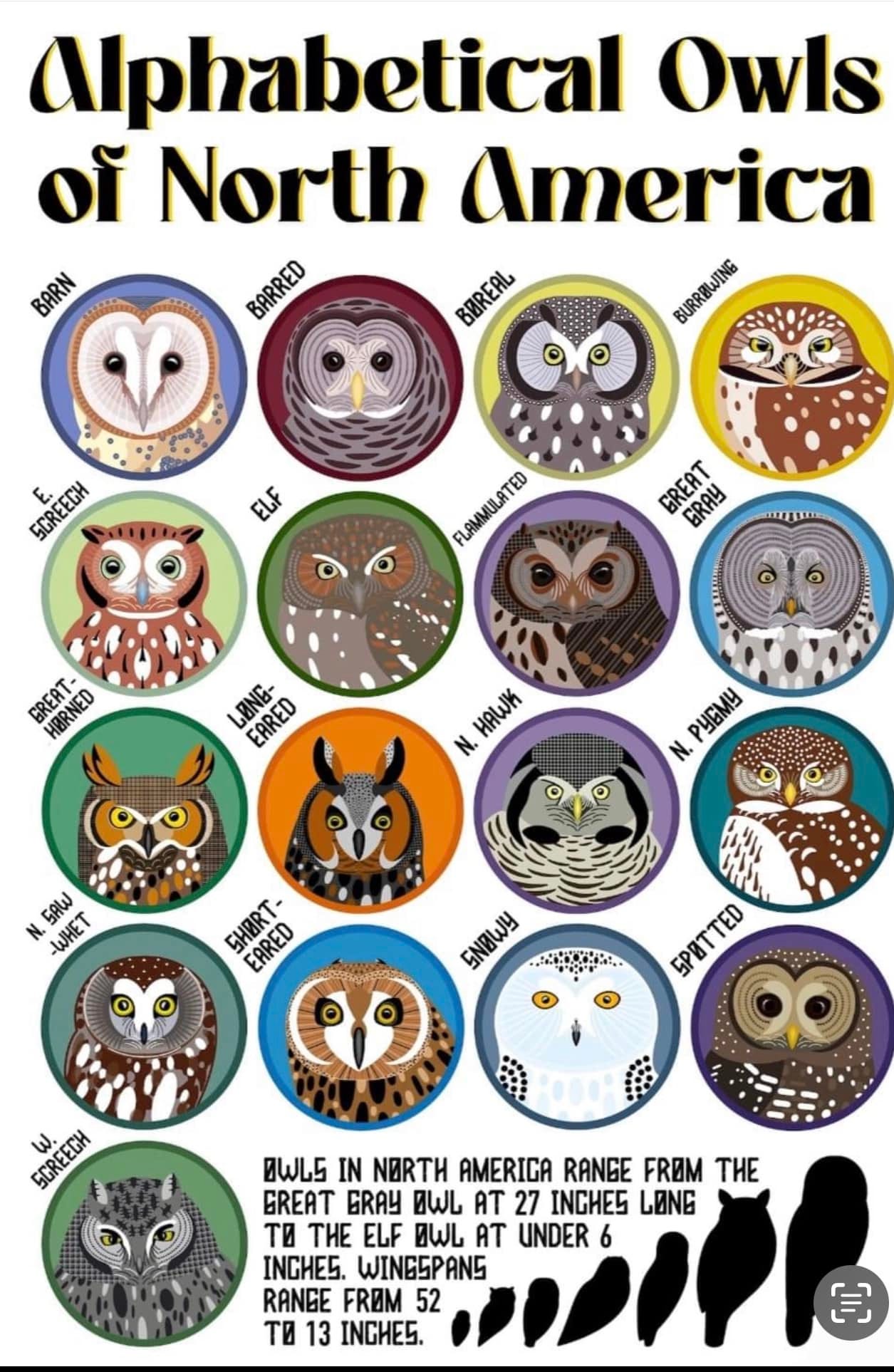
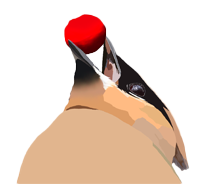






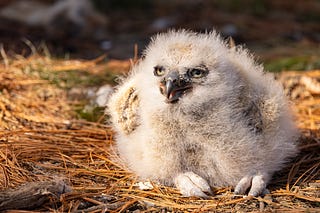




Nature teaches us so gently.🌿
“A diffuse light where humble people extend kindness to others and, in so doing, change the world in unforeseen ways.”
One warm summer evening as my wife and I traveled a lonely country road, we came upon an somewhat small owl sitting in the middle of the lane we were traveling in. I slowed, figuring it would soon take off. It didn’t, instead choosing to stay right there. I came to a stop about ten feet away and turned off my headlights, leaving my parking lights on. After watching the owl for a few minutes, I got out and approached this unique creature; it did not move and I walked right up to it and sat down next to it. I spoke to it softly, then reached out and began to stroke its incredibly soft neck. This went on for several minutes, and I became concerned for the owl, thinking perhaps it was ill. Eventually I made a soft clicking sound, and with that the owl spread its wings and flew off into the darkness. It was one of the most wonderful experiences of my life. That encounter with such a beautiful creature left me feeling blessed.